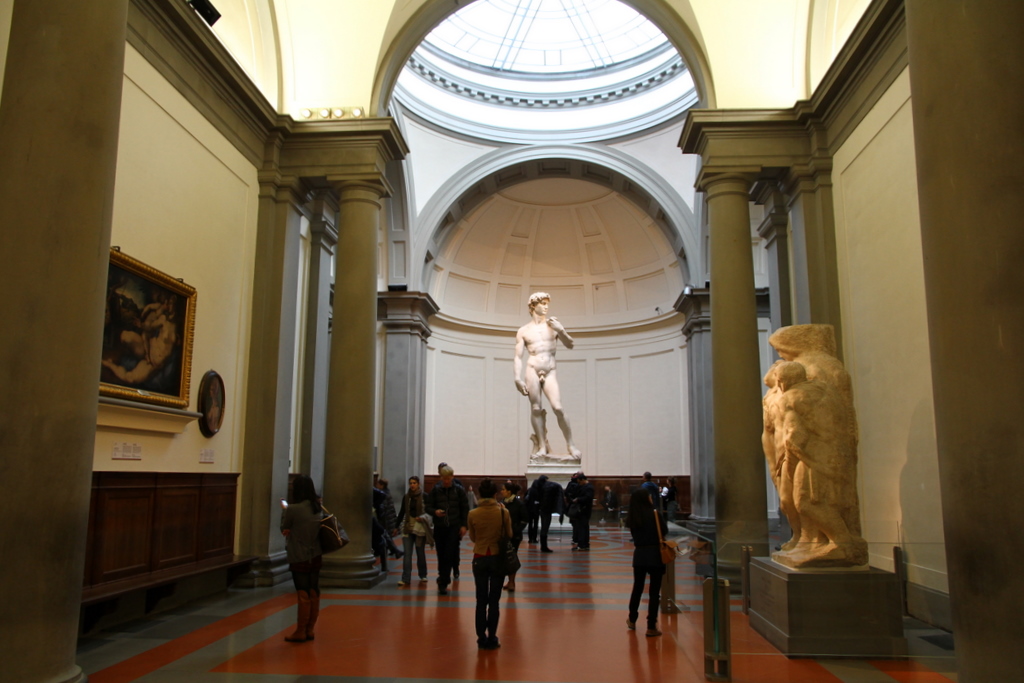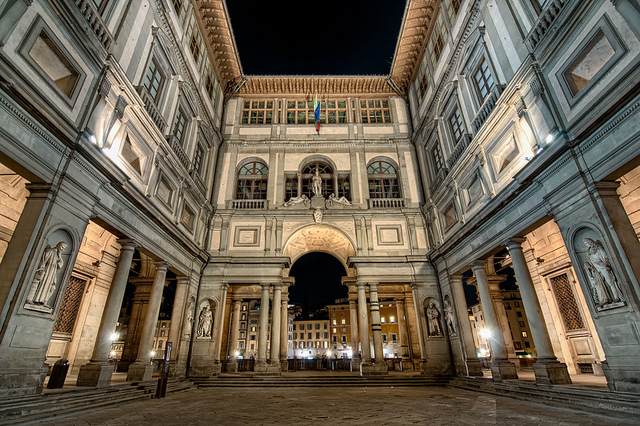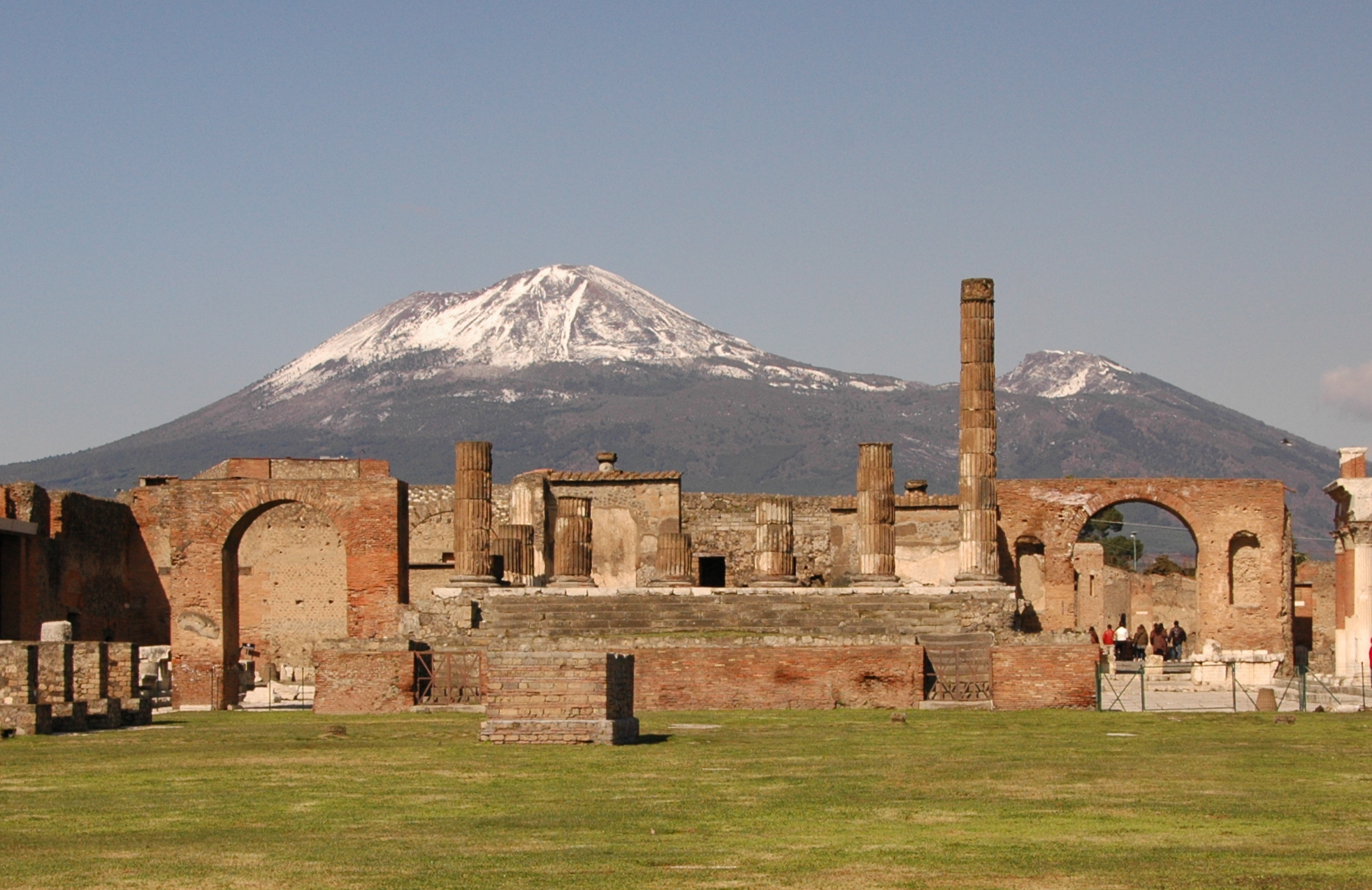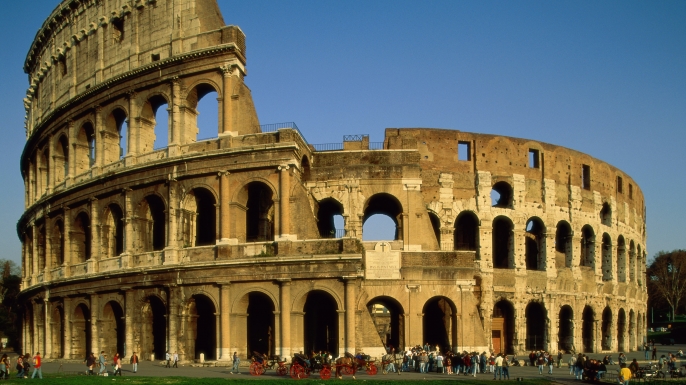Italy’s Touristic Trade
In today’s digital era, one will be hard pressed to find anyone who doesn’t dream of gallivanting through Europe to see the historical sights it has to offer. One of the most requested sights and top vacation destinations is Italy. Italy brought in around 50 million visitors last year, and experienced vacations from around 57 million Italian residents as well.
Italy concentrates around 60% of art within the world, has the most masterpieces per square mile than any other country and is home to the most UNESCO world heritage sites. It seems as if you cannot throw a rock in Italy without it bumping into a historical masterpiece. While this comes as no surprise due to Italy’s rich history and influential past, it does bring to question where in Italy there is the highest amount of visitation. Recently Hotels.com had the same burning question which led to them calculating what the top attractions in Italy were for the year.
5. Castel Sant’Angelo National Museum

The infamous Castel Sant’Angelo, or Castle of the Holy Angel, was originally commissioned to be a mausoleum for the Roman Emperor Hadrian and his family to be buried in for years to come. However, the mausoleum turned into a fortress and castle for popes that connected to St. Peter’s Basillica through underground tunnels. Legend believes that the bronze angel that depicts Michael the Archangel atop the fortress was erected when Pope Gregory the Great had a vision of an angel placing his sword back in his sheath signifying the end of the plague. Today the masterpiece is a museum that invokes around 918,591 visitors a year.
4. The Accademia
 Traveling outside of Rome visitors can find some of the most brilliant masterpieces of art at The Accademia in Florence, Italy. The gallery was once a teaching center for students in the Academy of Fine Arts before becoming home to finest works of art in the world. Today the gallery is home to the florentine artist Michelangelo’s sculpture of David. The statue of David stands 5.17 meters tall and is a depiction of the biblical hero David. Alongside the statue visitors can also view halls filled with plethoras of botany, music, art symbols and painting techniques. The gallery hosts over 1.2 million visitors a year due to the breathtaking artistry it holds.
Traveling outside of Rome visitors can find some of the most brilliant masterpieces of art at The Accademia in Florence, Italy. The gallery was once a teaching center for students in the Academy of Fine Arts before becoming home to finest works of art in the world. Today the gallery is home to the florentine artist Michelangelo’s sculpture of David. The statue of David stands 5.17 meters tall and is a depiction of the biblical hero David. Alongside the statue visitors can also view halls filled with plethoras of botany, music, art symbols and painting techniques. The gallery hosts over 1.2 million visitors a year due to the breathtaking artistry it holds.
3. Uffizi Gallery & Vasari Corridor
 The expansive “U” shaped museum located in Florence, Italy began as offices to house the administrative and judiciary offices of Florence. The museum is home to hundreds of artworks that would take days to visit all of them. The most visited of these works is Botticelli’s The Birth of Venus and it helps to draw in over 1.8 million visitors every year to the museum. Within the Uffizi lies the Vasari Corridor. The corridor was erected in 1564 to allow the Florentine elite walk throughout the city safely crossing over the Ponte Vecchio and ending in the famous Boboli Gardens, which brings in over 710,000 visitors a year. The rich artistic history of the museum brings in a plethora of guests every year.
The expansive “U” shaped museum located in Florence, Italy began as offices to house the administrative and judiciary offices of Florence. The museum is home to hundreds of artworks that would take days to visit all of them. The most visited of these works is Botticelli’s The Birth of Venus and it helps to draw in over 1.8 million visitors every year to the museum. Within the Uffizi lies the Vasari Corridor. The corridor was erected in 1564 to allow the Florentine elite walk throughout the city safely crossing over the Ponte Vecchio and ending in the famous Boboli Gardens, which brings in over 710,000 visitors a year. The rich artistic history of the museum brings in a plethora of guests every year.
2. Pompeii
 Near the bay of Naples lies the the ruins of the ancient city of Pompeii. On August 24th, 79 A.D. the city was buried beneath a plume of ash, rock, and pumice from the eruption of Mt. Vesuvius. Many inhabitants fled the city in time, but those who stayed behind after the eruption were soon suffocated to death by a surge of superheated poison gas and pulverized rock. The ruins were uncovered in 1748 by a group of explorers, and beneath the meters of ash the city was found relatively in tact for it’s horrific past. Today the ancient ruins draw in around 2.5 million visitors a year hoping to learn about the history of the historic Roman city. Visitors can walk among the ruins visiting old houses, market places, courts and even view the plastered bodies of those lost in the treacherous event all while Mt.Vesuvius looms in the background.
Near the bay of Naples lies the the ruins of the ancient city of Pompeii. On August 24th, 79 A.D. the city was buried beneath a plume of ash, rock, and pumice from the eruption of Mt. Vesuvius. Many inhabitants fled the city in time, but those who stayed behind after the eruption were soon suffocated to death by a surge of superheated poison gas and pulverized rock. The ruins were uncovered in 1748 by a group of explorers, and beneath the meters of ash the city was found relatively in tact for it’s horrific past. Today the ancient ruins draw in around 2.5 million visitors a year hoping to learn about the history of the historic Roman city. Visitors can walk among the ruins visiting old houses, market places, courts and even view the plastered bodies of those lost in the treacherous event all while Mt.Vesuvius looms in the background.
1. Colosseum
 It comes as no surprise the historic and expansive Colosseum is the most visited attraction in Italy. The expansive amphitheater brings in over 5.6 million visitors per year with it’s alluring tumultuous history. Those who visit the Colosseum today will see only two thirds of what the amphitheater used to look like. After four centuries of active use the neglected Colosseum became a source of building material for the rest of Rome, turning the 50,000 seat amphitheater into a lost ruin. During it’s prime years the Colosseum was host to 100 days of games such as gladiator combats and wild animal fights. Spectators would spend hours at the amphitheater so luxuries were put into place. Sailors would construct canopies from knots of rope that would be brought out over the crowd to protect from the heat,and mixtures of water, wine and flowers would be sprayed on guests to combat the stench brought upon from seating being so close. The massive amphitheater was the largest in Rome’s history and remains an iconic symbol of Rome even today.
It comes as no surprise the historic and expansive Colosseum is the most visited attraction in Italy. The expansive amphitheater brings in over 5.6 million visitors per year with it’s alluring tumultuous history. Those who visit the Colosseum today will see only two thirds of what the amphitheater used to look like. After four centuries of active use the neglected Colosseum became a source of building material for the rest of Rome, turning the 50,000 seat amphitheater into a lost ruin. During it’s prime years the Colosseum was host to 100 days of games such as gladiator combats and wild animal fights. Spectators would spend hours at the amphitheater so luxuries were put into place. Sailors would construct canopies from knots of rope that would be brought out over the crowd to protect from the heat,and mixtures of water, wine and flowers would be sprayed on guests to combat the stench brought upon from seating being so close. The massive amphitheater was the largest in Rome’s history and remains an iconic symbol of Rome even today.
